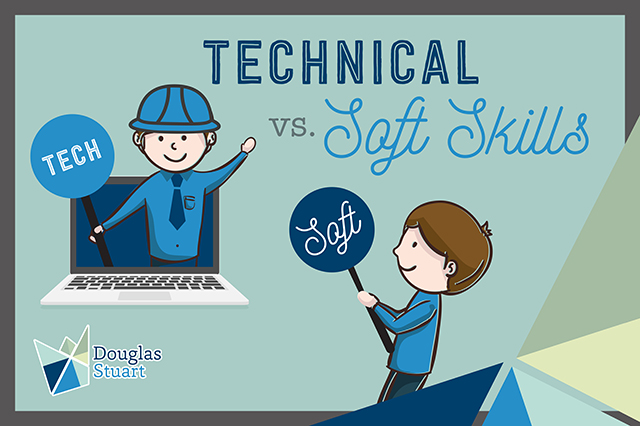The rise of non-technical skills in high risk industries
In 1989 a Midland Boeing 737 crashed into the embankment of the M1 near Kegworth, Leicestershire. It left 47 passengers dead and 74 seriously injured. Later investigations showed that the pilot had mistakenly shut down the working engine instead of the one that was on fire. Passengers who survived reported their confusion on hearing the pilot announce over the PA that there was a problem with the right engine. They could clearly see fire coming from the left engine. Cabin crew failed to share this information with the flight team. It begged the question, why?
In its subsequent report, the Civil Aviation Authority (CAA) said “It must be stated that had some initiative been taken by one or more of the cabin crew who had seen the distress of the left engine, this accident could have been prevented. It must be emphasised, nonetheless, that present patterns of airline training do not provide specifically for the exercise of coordination between cabin and flight crew in such circumstances”
Whilst the flight crew had high levels of technical competence, it was their ability to communicate and check shared understanding, alongside their relationship with the cabin crew, that proved to be a critical source of failure. This alone was enough to convince the UK CAA that CRM (non-technical skills) training should be mandatory. Improving skills in leadership, team work, communication, assertiveness and decision making took centre stage.
In high-risk environments the lack of the ‘right’ behaviours can be just as risky as a lack of technical ability.
The human face of safety
We’ve come along way from the traditional phase of safety culture, where rules and enforcement dominate. Most organisations with high-risk environments have instituted sufficient safety controls and management systems to be compliant. But is that enough? Research shows we are most likely to underperform in areas that we have no formal training in. High-risk industries may be putting too much emphasis on technical ability – understandably, a highly valued, trained, and assessed for commodity. But it’s often in these environments where a deficit of ‘soft skills‘ has the potential to diminish performance.
It’s a worrying skill gap not lost on Atul Gawande, surgeon and author. He makes a strong case for redressing the balance of skills required for surgeons. According to Gawande, poor communication skills between members of surgical teams account for 43% of errors. He’s vocal about the need to improve non-technical skills in surgery. Similarly, the NOTTS (Non-technical skills in surgery) has been developed to address the critical behavioural skills surgeons need to work safely with patients. These skills include the ability to disclose errors, coping with pressure, thinking ahead, working with unfamiliar teams and leadership. Skills perhaps that would be useful in other high-risk environments too?
By refocusing our efforts we may be able to exceed current levels of safety performance. It’s people and their behaviours that are critical. The human dimension of safety. It’s through people that we are most likely to take safety to the next level.
We need to think about ‘soft skills’.
Technical versus ‘soft skills’
Here in the UK, the list of technical competencies required of an HSE professional can sometimes exceed 30. From a recruiting point of view that represents a level of detail that’s a bit unwieldy.
Tony Gower-Jones, formerly HSE Director in Centrica, explains it’s important to have the right balance of skills,
“There has to be enough technical knowledge to understand the risks and the controls. You’ve got to ask the right technical questions, otherwise you’ll have no credibility, and, more importantly, put people at risk”
For example, a line manager who demonstrates all the right safety behaviours, but doesn’t have sufficient technical competence can be, according to Tony, a ‘loose cannon’. “They can become very passionate about a safety issue that’s just not critical, or in the best interest of the organisation’s risk strategy.
On the other hand, Tony adds ” You might have a brilliant safety process specialist, who meets every technical competency required. But if they don’t have the right communication skills, they won’t make any impact on the business”
It’s all about balance.
Getting the balance right
For Gower-Jones, the right balance between technical and behavioural competencies should be a 60/40 bias towards the technical. Some organisations he believes, are beginning to identify critical safety behaviours, but he says, ” there is no one company, or industry really leading the way in this area”
To enhance safety performance and effect cultural change there needs to be a strong partnership between managers and employees. Ideally forged on an alignment of individual and organisational values. With the emphasis on people and their skills, safety should be part of the recruitment strategy. Thus, if we train employees in the right ‘safety behaviours’ when they join an organisation, it makes sense to assess for those desired behaviours at the point of selection too?
Hiring Strategies need to address ‘soft skills’ gap
Despite the importance of balancing of technical and non-technical skills, there can be a lack of consistency when it comes to hiring strategies. Safety professionals sometimes lack the ‘soft skills’ to engage either senior executives or front line employees. That’s partly because identifying technical competencies is more straightforward. That’s what professional qualifications and certification are for. We can check them and they are easily verifiable. It’s an emphasis on ‘can they do the job?’ Assessing behavioural competencies sits more in the realm of ‘How do they do the job?’ – which lies at the heart of building a safety culture through people.
It was this skills gap, showing an imbalance between technical and non-technical skills that led Ruth Gallagher, formerly Safety Improvement Director at Heathrow (now Head of HSSE Operations at APM Terminals), to source members of her safety team internally. She says, ” There is a general skills gap and a shortage of talent; it’s hard to find potential in the market” She adds, ” That’s compounded by the fact that there is no real apprenticeship route for HSE professionals. And for HSE professionals currently working in SME’s, there are few opportunities to develop and be mentored in the soft skills. Yet, this is so important for future safety leaders”
Instead, Ruth identified existing Heathrow employees who have the right behavioural competencies for the team. Specifically, the ability to ‘story tell’, influence and make an impact. Any technical knowledge is learnt on the job. It means that she has built a team of safety professionals, who not only possess the right balance of skills, but they all understand safety within the context of Heathrow’s business and operational pressures.
Identifying behavioural competencies
What are effective ways of finding out what the core behavioural competencies you need as a business? One solution is to identify what the best practitioners do to achieve consistently high performance. They can include interpersonal and cognitive skills that complement a safety critical employee’s technical ability. They could also include communication skills, situational awareness, decision making, interpersonal skills, team working, alertness etc.However, every business is unique, and when it comes to identifying the critical work behaviours, specificity is key. In order to stay relevant and keep pace with the rate of change in the business world, those competencies will need to vary and adapt over time.
‘Safety is a value added service’ Ruth says, ‘ It’s about addressing ‘what is great safety and how do we deliver it? – much more of a service mentality”
For Ruth’s team at Heathrow, that means’ developing their coaching and influencing skills. ‘We work with a wide range of stakeholders who all have different safety concerns. Our aim is to work in partnership, identify their needs, using their own language and terminology. It’s much more about listening and empowering them to integrate safety with all their business decisions. Safety is about choice – our job is to bring those choices to life’.
Bringing safety choices to life means you have to translate the technical and legislative, into meaningful, real life scenarios. It’s tapping into how people ‘feel’ about safety, and inspiring action through emotional engagement. How? By working on skills that are highly people focussed rather than task focussed.
Competency frameworks help identify the right soft skills set for your safety professionals
Organisations with a strong safety culture, start with a shared vision. A vision communicated at every level of the business. So, why not assess for it at the point of recruitment and measure through performance appraisal?
Hiring Managers and team leaders need the right tools to identify and develop staff with the desired soft skill profile. Everyone involved in hiring decisions benefits from competency based assessment and appraisal training. By doing so you ensure that the right behaviours (not incident frequency) are interwoven into a balanced scorecard.
Using a competency based framework to inform selection decisions sits at the core of our practice at Douglas Stuart. We begin every search assignment with the development of a tailor-made behavioural based competency framework. This is a vital tool we use to identify candidates with the must-have, non-technical skills, which underpin the technical knowledge necessary in most high-risk environments.
You can find out more about our work here or simply contact us for an informal discussion about how to develop a competency based framework for you business.


